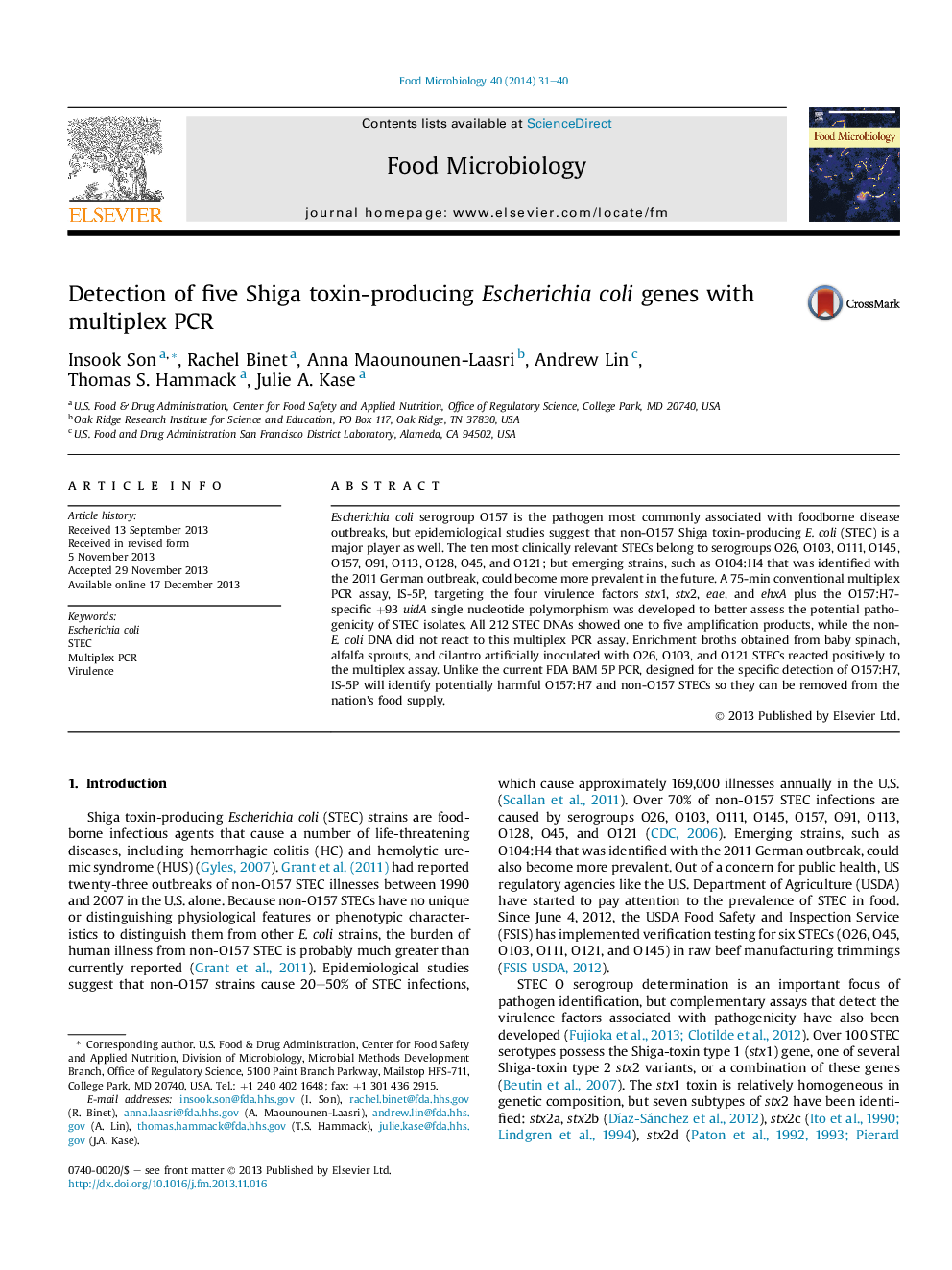| Article ID | Journal | Published Year | Pages | File Type |
|---|---|---|---|---|
| 4362817 | Food Microbiology | 2014 | 10 Pages |
•We developed a multiplex PCR assay to assess the pathogenicity of STEC isolates.•The PCR assay targets stx1, stx2, eae, ehxA, and +93 uidA.•The eae primers we designed detected 22 eae variants.•Inoculated leafy greens with STECs reacted positively to the multiplex assay.
Escherichia coli serogroup O157 is the pathogen most commonly associated with foodborne disease outbreaks, but epidemiological studies suggest that non-O157 Shiga toxin-producing E. coli (STEC) is a major player as well. The ten most clinically relevant STECs belong to serogroups O26, O103, O111, O145, O157, O91, O113, O128, O45, and O121; but emerging strains, such as O104:H4 that was identified with the 2011 German outbreak, could become more prevalent in the future. A 75-min conventional multiplex PCR assay, IS-5P, targeting the four virulence factors stx1, stx2, eae, and ehxA plus the O157:H7-specific +93 uidA single nucleotide polymorphism was developed to better assess the potential pathogenicity of STEC isolates. All 212 STEC DNAs showed one to five amplification products, while the non-E. coli DNA did not react to this multiplex PCR assay. Enrichment broths obtained from baby spinach, alfalfa sprouts, and cilantro artificially inoculated with O26, O103, and O121 STECs reacted positively to the multiplex assay. Unlike the current FDA BAM 5P PCR, designed for the specific detection of O157:H7, IS-5P will identify potentially harmful O157:H7 and non-O157 STECs so they can be removed from the nation's food supply.
